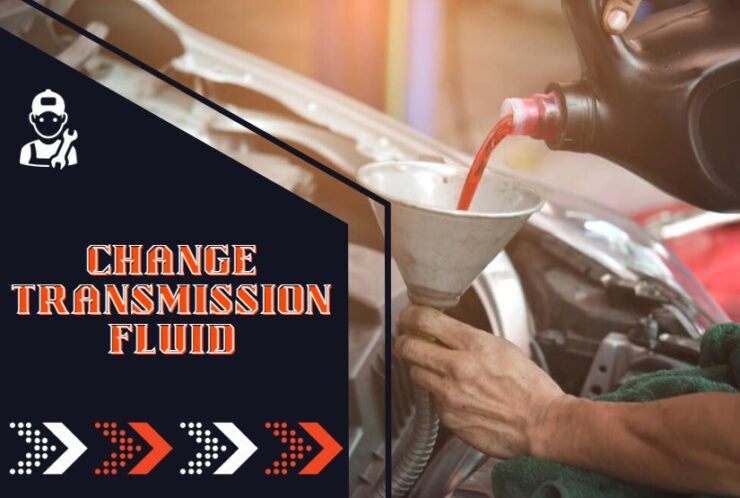When it comes to car maintenance, there’s one question that many people have: how much does it cost to change transmission fluid?
We’re here to tell you that the answer depends on a few factors.
But before we dive into the details, make sure your car is in gear and let’s get moving on this important topic!
Changing the transmission fluid is a relatively simple and inexpensive process, but it can vary significantly depending on the type of vehicle you have.
In this guide, we will discuss how much it typically costs to change transmission fluid on different types of cars.
We will also offer tips and advice for DIYers who want to try their hand at changing their own transmission fluid.
What is Transmission Fluid?
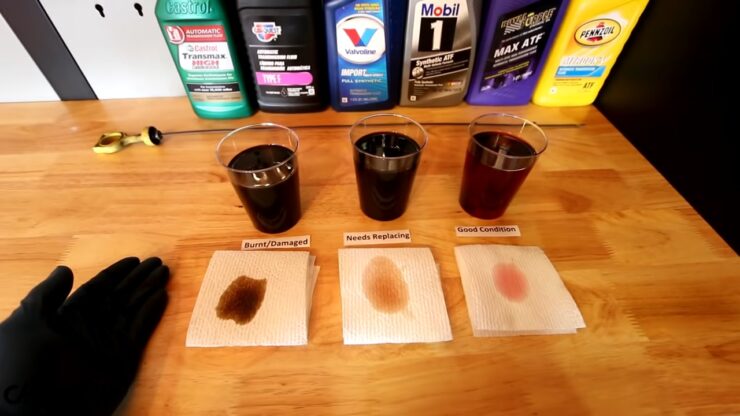
Transmission fluid is a fluid that is used to lubricate and cool the internal components of a car’s automatic transmission.
It helps to keep the transmission running smoothly and efficiently by reducing wear and tear on the internal components so that they last longer.
It also helps to maintain the proper temperature in the transmission, which can be affected by things such as driving conditions and vehicle load.
As it ages, transmission fluid can start to break down and become less effective at its job, meaning it needs to be changed in order for your car’s transmission to run properly and efficiently.
When checking your fluid levels, you’ll want to make note of any discoloration or smell from the fluid – this can indicate that there is something wrong with the fluid or that it needs changing.
The cost of changing your transmission fluid will depend on the type of car you have, whether or not it has an onboard computer, any additional service may need completing (such as flushing the lines) and whether you are having a mechanic do it or if you are doing it yourself.
Why Should You Change it Regularly?
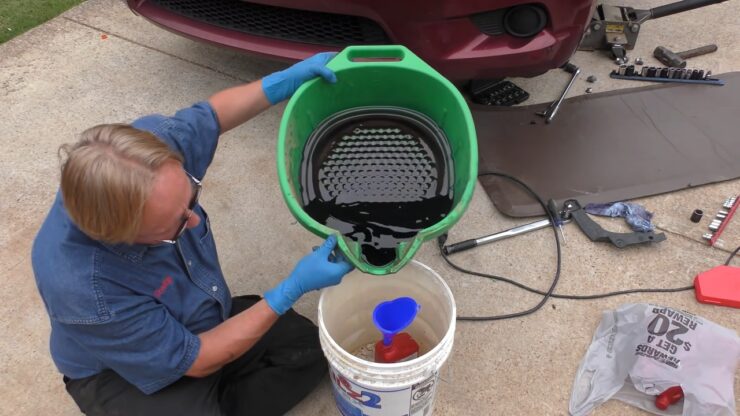
In general, regularly changing your vehicle’s transmission fluid can help to extend its lifespan and improve performance.
It is important to note that transmission fluid should not be confused with engine oil – the two serve different functions and cannot be used interchangeably.
By regularly changing it, you can:
• Provide adequate lubrication to keep your car’s gears shifting properly.
• Prevent wear and tear caused by repeated heat cycling and degrading of lubricants in the transmission system.
• Reduce stress on other parts such as seals, clutches, bearings, valves, solenoids and pump components in the transmission unit resulting in fewer breakdowns related to overheating due to lack of lubrication or contamination.
• Make sure the internal components will move more freely due to optimized viscosity which helps provide prolonged service life.
• Avoid potential clogs from particles in old fluid settling into hard-to-reach places such as cooling lines or passages that could create major problems later on down the road.
• Improve fuel efficiency by keeping key parts working at maximum efficiency enabled by optimized conditions created with fresh new fluid.
What are the Different Types of Transmission Fluid?
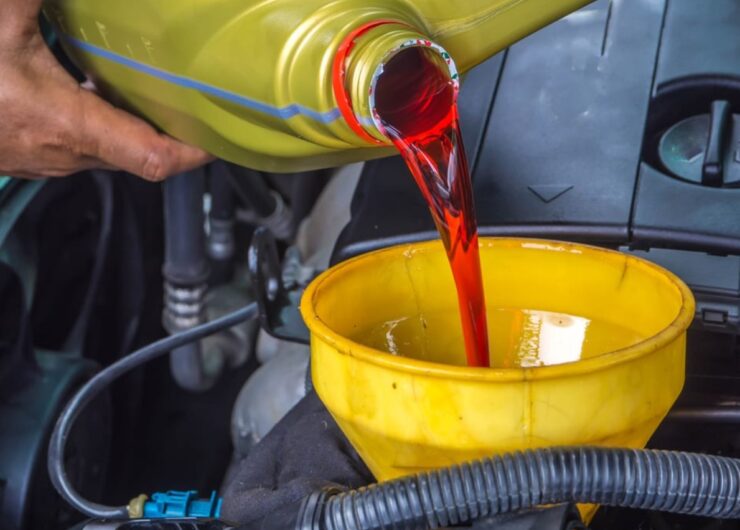
The two primary types of transmission fluid are automatic and manual.
Automatic transmission fluid, also referred to as ATF, helps keep the transmission operating smoothly, lubricates components and transmits torque from the engine to the transmission.
Manual transmission fluid lubricates synchronizers, gears and bearings in a manual transmission system.
It also should provide protection against wear, reduce foaming and maintain viscosity under use.
It is important to know what type of fluid is needed for your car’s specific make, model and year; this information can be found in your owner’s manual or online at the vehicle maker’s website.
Many vehicles require a type of synthetic ATF that can cost up to $100-$200 per gallon depending on brand or manufacturer. It typically costs between $100-$250 to change the transmission fluid in most cars depending on the amount of labor time required.
How Often Should You Change It?
In most vehicles, it is recommended that you should change the transmission oil on a regular basis.
Many automakers recommend changing the fluid every 30,000 to 60,000 miles; however, there can be different requirements depending on the make and model of your vehicle.
There are also some transmissions that may require more frequent changes.
It’s important to check your owner’s manual for the requirements specific to your own car.
The process for changing transmission fluid varies from car to car and is generally not very difficult or expensive.
In most vehicles, transmission fluid replacement costs between $80 and $100 for a full service, which includes removing the old fluid, replacing the filter and putting in new fluid.
It’s important to note that some manufacturers recommend certain types of fluids that can increase maintenance costs – please refer to your owner’s manual before seeking service.
Find the best full synthetic oil if you drive a diesel car.
How Much Does it Cost to Change Transmission Fluid?
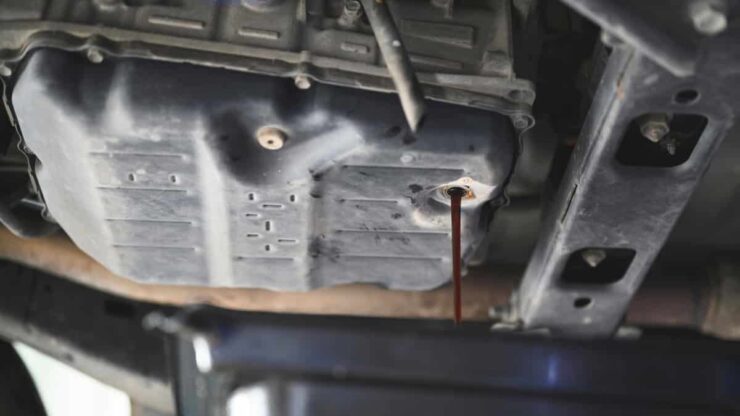
A transmission fluid flush typically runs anywhere from $100–$200 depending on the make, model, and year of the vehicle. On top of that cost, you’ll probably be paying for six to nine quarts of transmission fluid.
The price can vary depending on variety—a standard fluid change uses regular fluid whereas a synthetic option is typically offered as well.
Synthetic costs a bit more but gives an extra layer of protection against wear and tear by withstanding higher temperatures better than conventional fluids do.
Most cars require up to nine quarts in total, making synthetic options range from $90–$120 just for the added protection alone!
In addition to these additives, some mechanics may additionally recommend transmit filters which supplement additional costs to your repair bill as well—averaging around $50 additional dollars when all said and done.
Furthermore, some dealerships use special equipment and synthetic blend fluids alongside other recommended repair services this can contribute towards a higher bill as well—so be sure to talk with your Mechanic before authorizing any repairs & services!
This way you can make sure that you’re getting what’s best for your car at an acceptable price point!
Do-it-Yourself vs. Professional Transmission Fluid Change
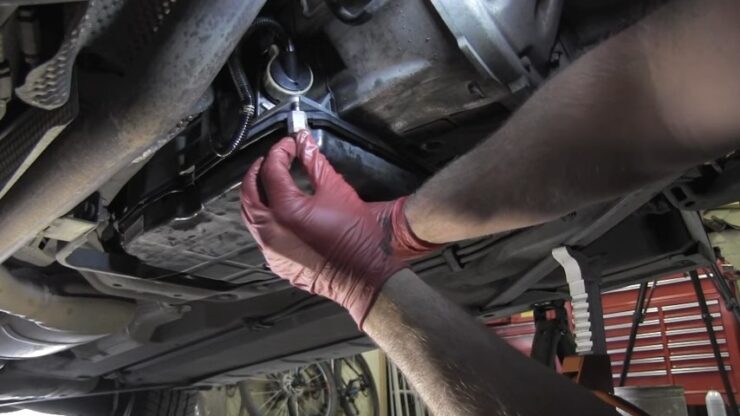
When it comes to changing your vehicle’s transmission fluid, you have two options– performing the job yourself or having a professional do it.
DIY transmission fluid changes can save you money, but require special tools and may not be suitable for all makes and models of vehicles.
Professional transmission fluid changes are more expensive but offer convenience and peace of mind knowing the job was done correctly.
Do-it-Yourself:
DIY transmission fluid changing services can be done for as little as $20 to $50 or more, depending on the type of vehicle and how much fluid is needed.
However, most vehicles require a reasonable degree of mechanical ability as special tools may be needed.
Accessing the dipstick tubes to check level and adding new fluid often requires raising the vehicle and crawling underneath to access these hard-to-reach components.
Furthermore, incorrect procedures can cause serious damage; therefore a reasonable degree of mechanical aptitude is required before attempting a do-it-yourself service.
Professional Service:
The cost of having your car’s transmission serviced professionally depends on make and model, type of cleaning method used (determines cost of parts) if needed and parts replacement might cost anywhere from $100–$400 or more depending on which parts need replacing.
While this is an investment, it ensures that fluids are changed properly with no adverse effects disrupting drivetrain operation; gear shifts happen smoothly with appropriate smoothness when accelerating from a standing start or during gear shifts when speed increases, extending the life of your car’s powertrain components in the long run.
Transmission Flush vs Transmission Exchange
Transmission fluid is essential for the proper functioning of your vehicle’s transmission. Over time, the fluid can become contaminated, causing a variety of problems. To keep your transmission in good working order, it’s important to change the fluid regularly.
There are two ways to change transmission fluid: a transmission flush or a transmission exchange. A transmission flush involves removing all the old fluid from your transmission and replacing it with new fluid. A transmission exchange involves draining some of the old fluid from your transmission and then adding new fluid to replace it.
Which method is best for you depends on the condition of your transmission and your budget. If your transmission is in good condition and you’re looking for a more affordable option, a transmission exchange may be the way to go. However, if your transmission is starting to show signs of wear and tear, a flush may be a better option.
| Transmission Flush | Transmission Fluid Change |
| Requires a professional-grade flush machine to flush away the automatic transmission fluid | Uses natural gravitational forces to drain the ATF |
| Completely removes all the ATF from the transmission | Drains ATF from the pan |
| Flushes away grime and contaminants from the torque converter and cooler lines | Does not remove contaminants |
| Runs a special solution through the cooler lines until completely clean, and refills the system with new ATF | Only drains 20% to 40% of the total ATF volume |
| A trained professional should perform this service | Drivers may choose to handle this themselves |
| Transmission flush cost: Typically, $125 to $250 | Transmission fluid change cost: Typically, between $80 and $250; the cost varies depending on where the service is performed, what fluid is used, and other factors |
FAQ
What happens if you don’t change your transmission fluid?
If you don’t change your transmission fluid, your car’s transmission will eventually fail.
Transmission fluid breaks down over time and loses its ability to lubricate and cool the transmission. This can lead to expensive repairs or even replacement.
Does car run better after the transmission fluid change?
Changing the transmission fluid will help to keep the transmission components clean and lubricated, which will allow them to work more efficiently.
This can lead to improved gas mileage as well as improved performance from your car overall.
If you have been noticing issues with your transmission, such as slipping or hesitating, then changing the fluid may help to resolve those issues.
What are the signs of low transmission fluid?
There are a few key signs that you should be aware of that will indicate low transmission fluid levels. These include:
1. Difficulty shifting gears: If you notice that it’s becoming harder to shift gears, especially when going from neutral to drive or reverse, this could be a sign that your transmission fluid is low.
2. Transmission slipping: Another common symptom of low transmission fluid is when the transmission slips while in use. This can feel like the car is losing power or hesitating before changing gears.
3. Check engine light: In some cases, the check engine light may come on if the transmission fluid level is low. This should be checked out by a professional as soon as possible to diagnose the problem.
4. Grinding or shaking: If you feel any grinding or shaking sensations coming from the transmission area, this could also indicate low fluid levels.
What to do after transmission fluid change?
After you change the transmission fluid, it’s important to turn the vehicle on and allow it to run for a few minutes.
This will help the new fluid circulate properly and prevent any air pockets from forming.

Conclusion
When it comes to transmission fluid change costs, the answer depends on the type of car you own, how often you get the fluid changed, and whether you do it yourself or take it to a professional.
It is important to remember that regularly changing your transmission fluid is key to keeping your vehicle running properly and allowing for smoother operation.
Therefore, although there may be an initial cost associated with getting a transmission fluid change, it will pay off in the long run by saving you from costly repairs down the road.

